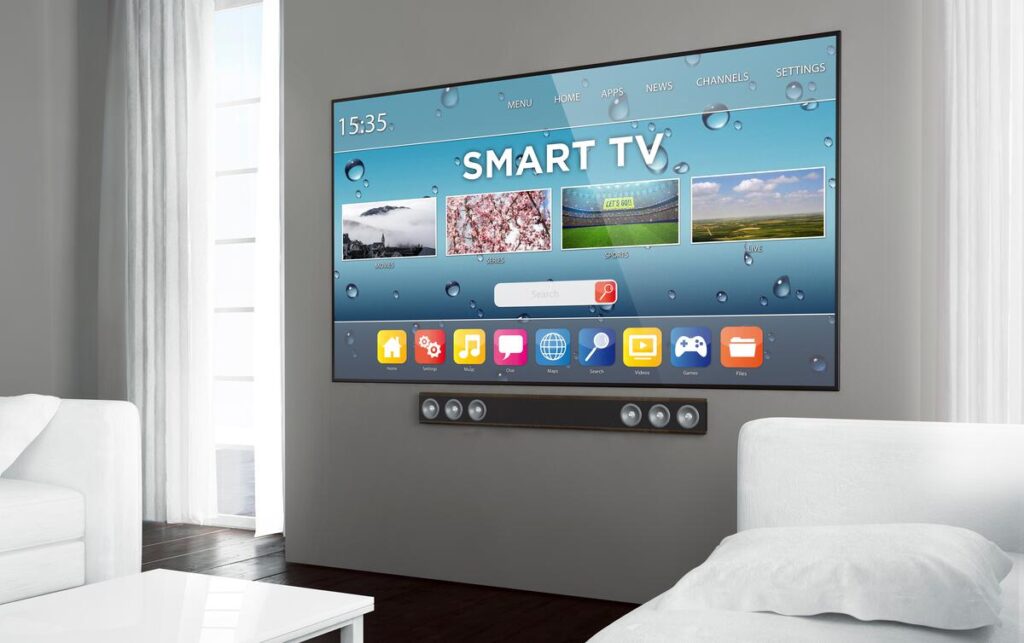Is A Smart TV An IOT Device? (Explained For Beginners)
Disclosure: Tech Parasol is supported by its readers. When you purchase through links on our site, we may earn an affiliate commission. Thank you.
- Smart TVs are not IOT devices
- Smart TVs can connect to the Internet and control connected devices
Smart TVs are capable of many things including streaming, playing games and some even have the ability to control devices in your smart home.
So does that mean a Smart TV is an Internet Of Things (IOT) device?
Smart TVs are not IOT devices since they don’t have the ability to collect data via sensors and operate autonomously. Any device that cannot operate without human intervention or control is not considered an IOT device.

Why is a Smart TV not an IOT device?
Although Smart TVs can connect to the Internet, they aren’t typically considered to be an IOT device because they can’t operate automatically without human control or intervention.
IOT devices are often everyday objects that have been made “intelligent” by embedding sensors in them.
These sensors generate data and the electronics within the device can transmit that data to the cloud or to other connected devices on the network.
An example of this type of device might include a smart thermostat that automatically adjusts the temperature to keep it at an optimum level.
Or you might have a smart fridge that automatically orders more milk when it detects that you are running out.
Devices such as smart bulbs, smart plugs, Amazon Echo’s, smart wearables and connected cars are all considered to be an IOT device.
Although Smart TVs can send data to the cloud or to another device, they don’t contain sensors and make intelligent decisions that IOT devices can.
What type of device is a Smart TV?
Although Smart TVs contain the word “Smart” they aren’t IOT devices.
But a Smart TV is Television that is smart in the sense that it can be connected to the Internet and can download and run “apps”.
Old, “non-smart” TVs didn’t have the ability to connect to the Internet and they could only display content received from a satellite dish, aerial or another AV source such as a DVD player.
Today’s Smart TVs offer the ability to connect to the Internet, download apps and stream movies.
They even allow you to control your home’s connected devices and gadgets.
But Smart TVs still can’t operate independently and are simply devices that can offer more programming options that are provided by “dumb” TVs.
Can you turn a Smart TV into an IOT device?
Smart TVs cannot be turned into an IOT device because this would require sensors and other hardware to be installed inside the TV.
Many people also turn off their Smart TVs when not in use.
This would prohibit the use of a Smart TV as an IOT device since they would need to be connected to the Internet at all times.
Can you control an IOT device using a Smart TV?
Smart TVs are compatible with many connected devices in the home and are able to control devices such as smart lights, smart plugs and many more.
Some TVs like Samsung Smart TVs have dedicated dashboards that allow you to control connected devices, view their status and get notified of certain events.
For example, Samsung SmartThings can alert you when someone presses your Ring Doorbell or it can control the lighting in your living room.
Many Smart TVs also have Google Assistant or Amazon Alexa built into them which can control speakers, games consoles, smart plugs, home security systems and even smart appliances such as washers, dryers, dishwashers and vacuums.
Sources
What is a Smart TV? Everything You Need to Know
8 Internet things that are not IoT
Roles of Smart TV in IoT-environments: a Survey

Robert Anderson
Robert Anderson, the founder of Tech Parasol, had a keen interest in tech from a very young age. He studied Electronic Engineering at University and then went on to become a Software Developer. He launched Tech Parasol in 2021 to share his knowledge with the aim of making tech easier to understand for everyone.
